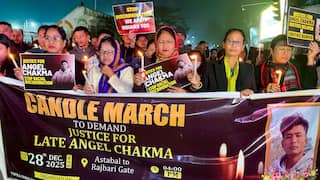Explorer
Justifying blockade: Brahmaputra dam not to affect flow to India says China

Beijing: Justifying its move to blockade a tributary of the Brahmaputra to construct a dam, China today sought to allay apprehensions that it would affect the river flow into India claiming that there will be no adverse impact on downstream areas. Terming the Lalho dam project on the Xiabuqu river, a tributary of the Brahmaputra which is locally called as Yarlung Zangbo, as an important livelihood project to address food security and flood safety in Tibet, the Chinese Foreign Ministry said the tributary river is located completely within the Chinese side. "The reservoir capacity of the project is less than 0.02 per cent of the average annual runoff of the Yarlung Zangbo-Brahmaputra. It cannot have an adverse impact on the downstream," Chinese Foreign Ministry said in a written reply to PTI to a question on India's concerns over the dam. Brahmaputra flows from Tibet into Arunachal Pradesh, Assam and later into Bangladesh. On October 1, China announced the blockade of Xiabuqu river in Tibet as part of the construction of its "most expensive" dam project. The Lalho project on Xiabuqu River a tributary in Xigaze in Tibet involves an investment of USD 740 million. Referring to the Expert Level Mechanism (ELM) on trans-border rivers between India and China, the Chinese foreign ministry said both the countries have been carrying out good cooperation on trans border rivers for a long time. "Proceeding from the larger picture of China-India friendship and from the humanitarian angle, the Chinese side has overcome all kinds of difficulties, and has provided services to the Indian side such as flood season hydrological data and emergency management, and has played a positive role in areas such as flood and disaster control along the banks of the relevant rivers," the ministry said. "China is willing to continue relevant cooperation with the Indian side through the existing expert level mechanism on trans-border rivers," it said. Stating that Brahmaputra is rich in water and a major hydrological resource for Tibet, the Chinese Foreign Ministry said"the development and utilisation of the Chinese side at present is just one per cent". "The water quality that crosses the border is good and is basically at its natural state," it said. Brahmaputra flows through economically less developed ethnic minority regions of China, it said. "Legitimate use of the water and hydrological resources is an important component of the rights of the people of this region to live and develop," it said. "The Chinese side has always held a responsible attitude towards exploitation of water resources of the Yarlung Zangbo, and carries out a policy of actual development and protection at the same time. Scientific planning, adequate justification, prudent decisions and orderly exploitation are in line with international practice," it said.
Related Video
Unnao Rape Case: Supreme Court Begins Hearing on CBI Plea Against Kuldeep Sengar’s Bail
Follow Breaking News on ABP Live for more latest stories and trending topics. Watch breaking news and top headlines online on ABP News LIVE TV





































